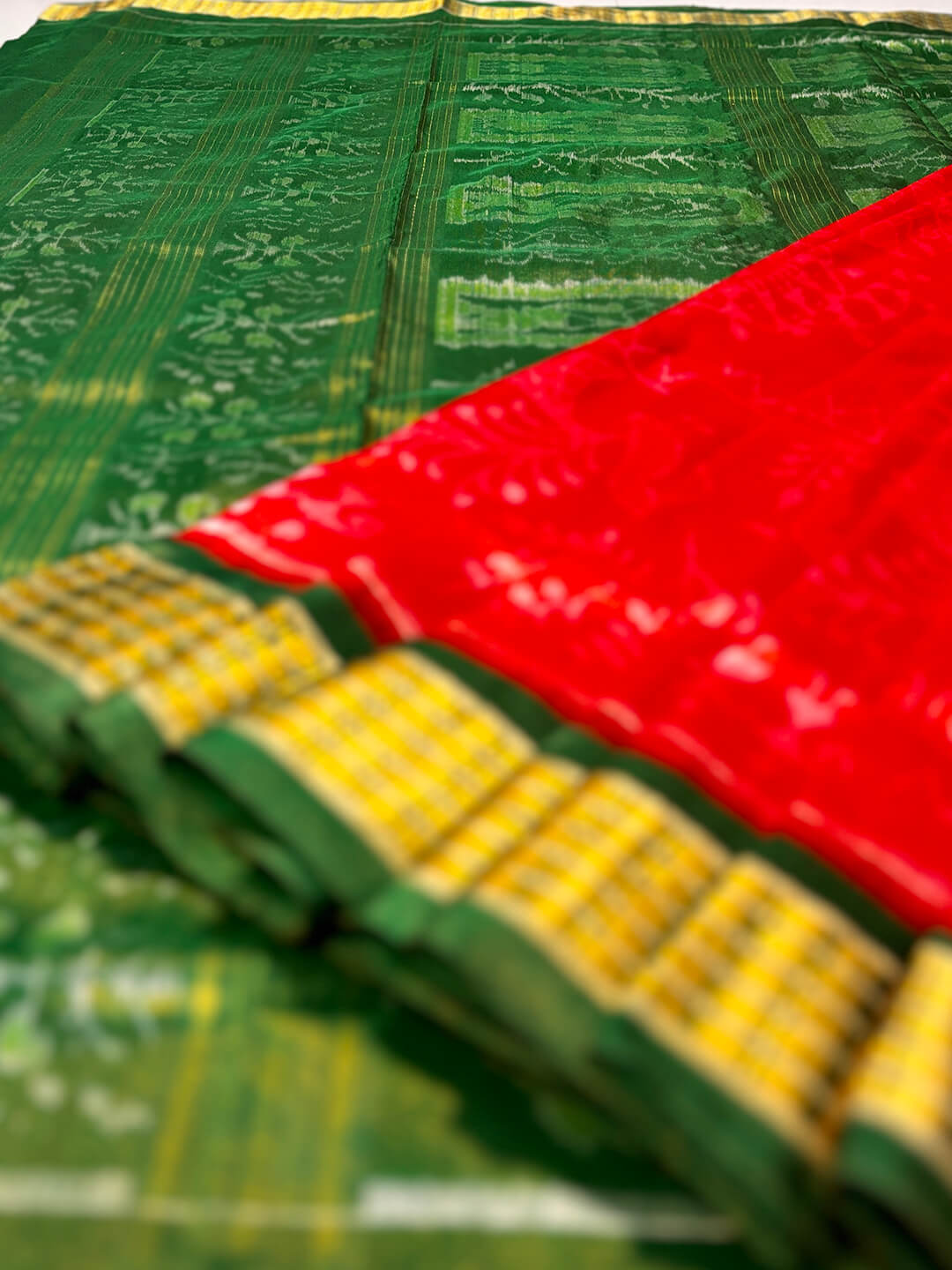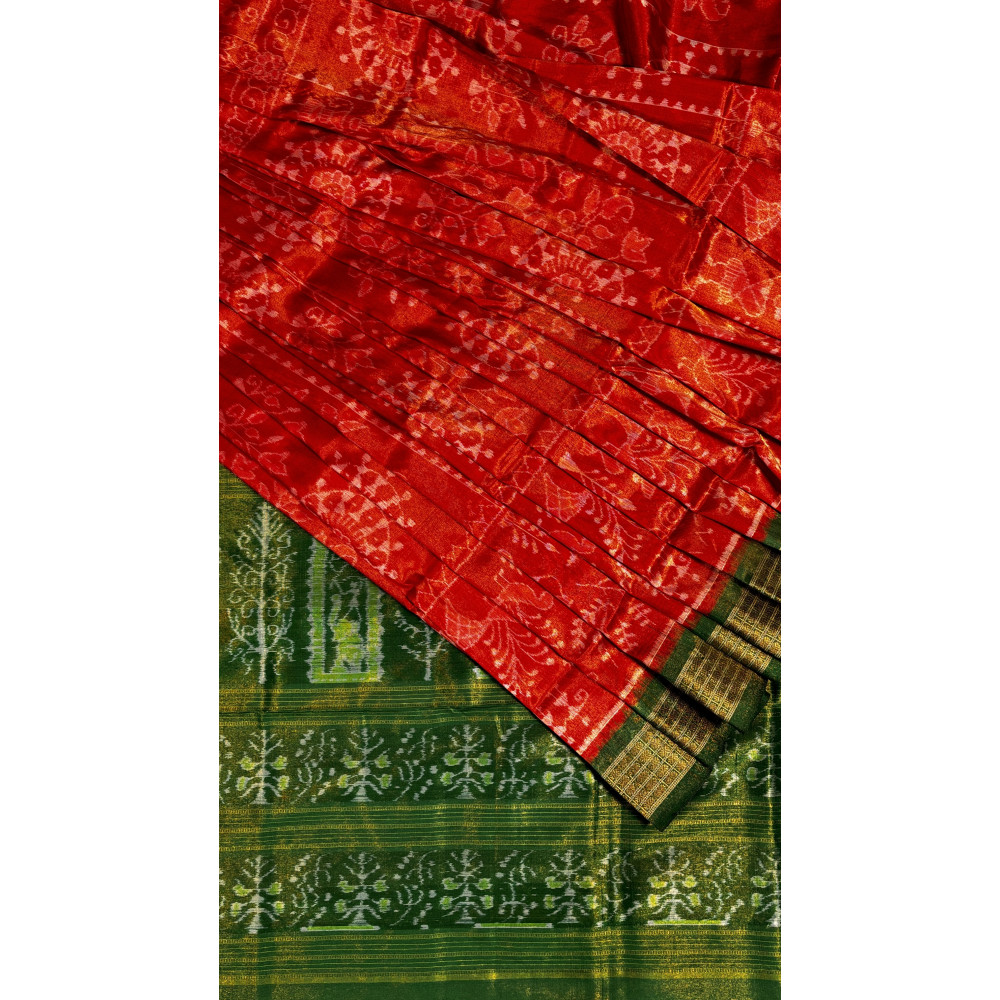In the world of traditional textiles, few crafts captivate the imagination like the intricate art of Ikat weaving. Among the diverse Ikat styles, Sambalpuri sarees from Odisha, India, stand out for their exquisite beauty and cultural significance. Let's embark on a journey to explore the mesmerizing world of Sambalpuri sarees, delving into their history, the meticulous process of their creation, and the vibrant cultural heritage they represent.
A Glimpse into History
Sambalpuri sarees originate from the western region of Odisha, particularly from the Sambalpur district. The history of these sarees dates back to the 12th century, with the Patan Patola of Gujarat influencing the local weaving techniques. Over time, the artisans of Odisha developed their unique style, combining their rich cultural heritage with the Ikat weaving technique to create the now-iconic Sambalpuri sarees.
The Ikat Weaving Technique
The Art of Resist Dyeing
Ikat, derived from the Malay-Indonesian word "mengikat," meaning to tie or bind, is a resist dyeing technique where the yarns are tightly bound in specific patterns before dyeing. This meticulous process ensures that the dye does not penetrate the bound areas, creating intricate patterns once the bindings are removed.
Ikat, derived from the Malay-Indonesian word "mengikat," meaning to tie or bind, is a resist dyeing technique where the yarns are tightly bound in specific patterns before dyeing. This meticulous process ensures that the dye does not penetrate the bound areas, creating intricate patterns once the bindings are removed.
The Weaving Process
The weaving process of Sambalpuri sarees is a labor-intensive task that demands immense patience and dexterity. Here's a closer look at the steps involved:
- Yarn Selection and Preparation: High-quality cotton or silk yarns are chosen and meticulously prepared by washing and stretching.
- Tying the Yarn: The yarns are carefully marked and tied with a waterproof material, following the desired pattern.
- Dyeing: The tied yarns are dyed in various shades, depending on the design. This process may be repeated multiple times to achieve complex color patterns.
- Weaving: The dyed yarns are then woven on a traditional handloom, with the weaver ensuring the intricate patterns align perfectly.
The Symbolism and Motifs
Sambalpuri sarees are renowned for their vibrant colors and traditional motifs, each carrying significant cultural and symbolic meanings. Common motifs include:
- Shankha (Conch Shell): Symbolizes auspiciousness and purity.
- Chakra (Wheel): Represents the eternal cycle of life and the divine connection.
- Phula (Flower): Signifies beauty, grace, and prosperity.
These motifs are not just decorative but are deeply embedded in the cultural and spiritual ethos of Odisha, reflecting the region's rich heritage.
The Cultural Significance
Sambalpuri sarees are more than just a piece of clothing; they are a symbol of Odisha's cultural identity and heritage. These sarees are worn during festivals, weddings, and other auspicious occasions, embodying the region's traditions and craftsmanship.
The art of Sambalpuri Ikat weaving has also played a crucial role in the local economy, providing livelihood to numerous artisans and weavers. Despite the challenges posed by modern, machine-made textiles, the resilience of these artisans has kept the tradition alive, preserving the rich legacy of Sambalpuri sarees.
Conclusion
The intricate art of Ikat weaving, as exemplified by Sambalpuri sarees, is a testament to the ingenuity, skill, and cultural richness of Odisha's artisans. Each saree tells a story of tradition, craftsmanship, and heritage, making it a treasured possession for those who appreciate the beauty of handwoven textiles. As we wrap ourselves in the vibrant hues and patterns of a Sambalpuri saree, we not only adorn ourselves in exquisite art but also embrace a piece of India's timeless cultural legacy.
Whether you're a textile enthusiast or someone with a penchant for traditional art forms, the world of Sambalpuri sarees offers a fascinating glimpse into the intricate art of Ikat weaving. Next time you don one, remember the skilled hands that brought it to life, weaving stories of tradition and beauty into every thread.




